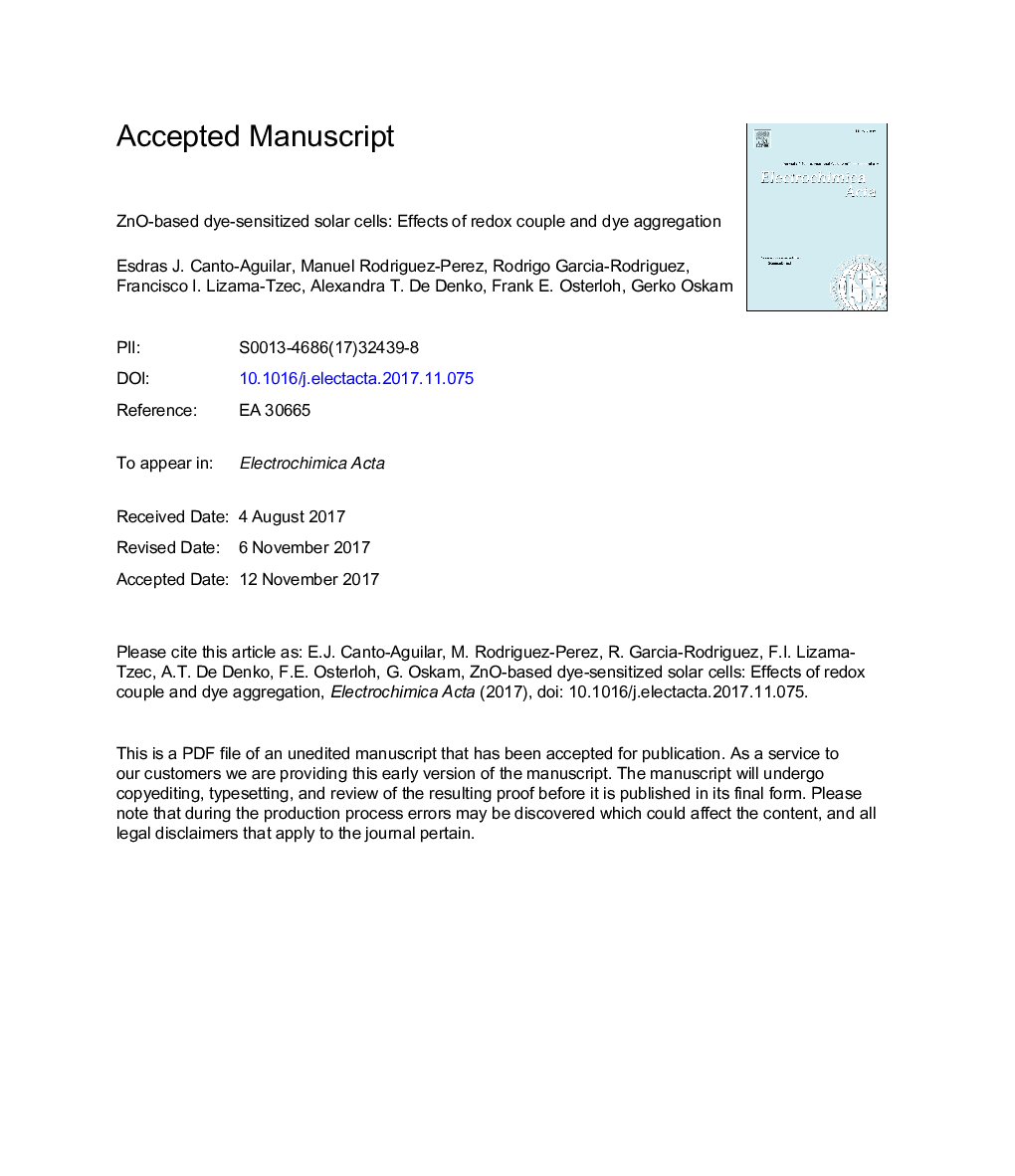| Article ID | Journal | Published Year | Pages | File Type |
|---|---|---|---|---|
| 6605135 | Electrochimica Acta | 2017 | 42 Pages |
Abstract
The performance of ZnO-based dye-sensitized solar cells (DSSCs) has always been lower than that of TiO2-based devices, however, the factors for this difference are still not entirely understood. Here we use current - voltage curves in combination with intensity-modulated photovoltage spectroscopy, charge extraction measurements, and surface photovoltage spectroscopy to gain insight in the photochemical charge separation in ZnO-based DSSCs. Devices were fabricated with electrodeposited nanostructured, mesoporous ZnO films, an organic fluorenyl-thiophene dye (OD-8) as sensitizer, and an electrolyte solution with either the Iâ/I3â or [Co(2,2â²-bipyridyl)3]2+/3+ redox couple. Surface photovoltage measurements and scanning electron microscopy images show that Zn2+-dye aggregates are most likely the cause of a decrease in cell performance with sensitization times longer than 4Â h, due to the relatively acidic acrylonitrile bonding moiety of the OD-8 dye. Charge extraction measurements combined with intensity-modulated photovoltage spectroscopy illustrate that a lower electron lifetime for the DSSCs with the [Co(2,2â²-bipyridyl)3]2+/3+ redox couple prevents achieving the thermodynamically attainable photovoltage, thus limiting solar cell efficiency. It can be concluded that further improvements in ZnO-based DSSCs are possible by: (i) avoiding the formation of Zn2+-dye aggregates in the mesoporous structure; (ii) preventing back electron transfer from ZnO to the electron acceptor in the electrolyte solution.
Related Topics
Physical Sciences and Engineering
Chemical Engineering
Chemical Engineering (General)
Authors
Esdras J. Canto-Aguilar, Manuel RodrÃguez-Pérez, Rodrigo GarcÃa-RodrÃguez, Francisco I. Lizama-Tzec, Alexandra T. De Denko, Frank E. Osterloh, Gerko Oskam,
